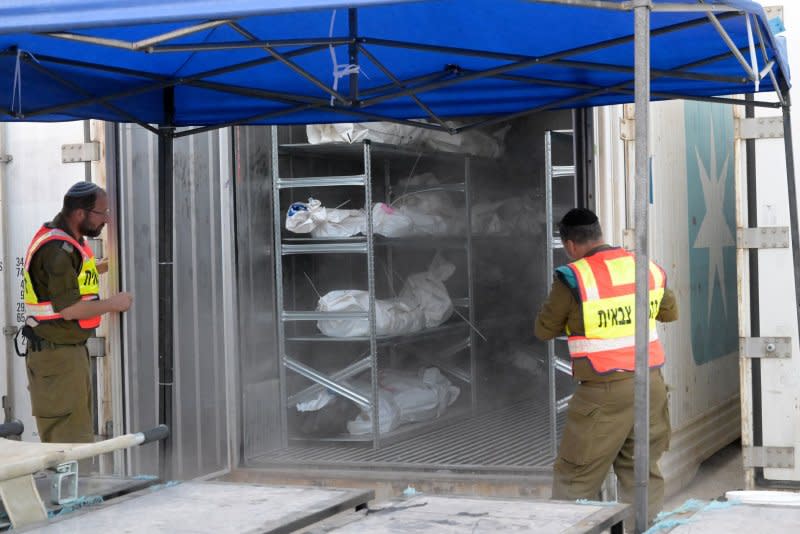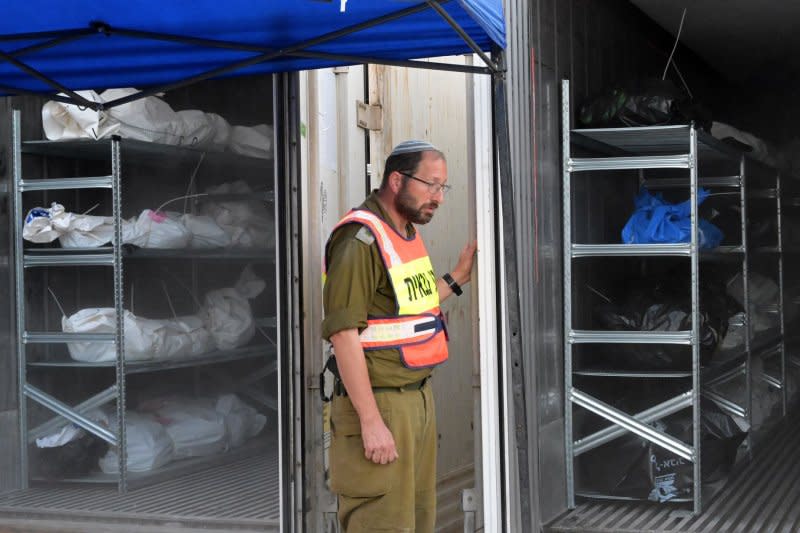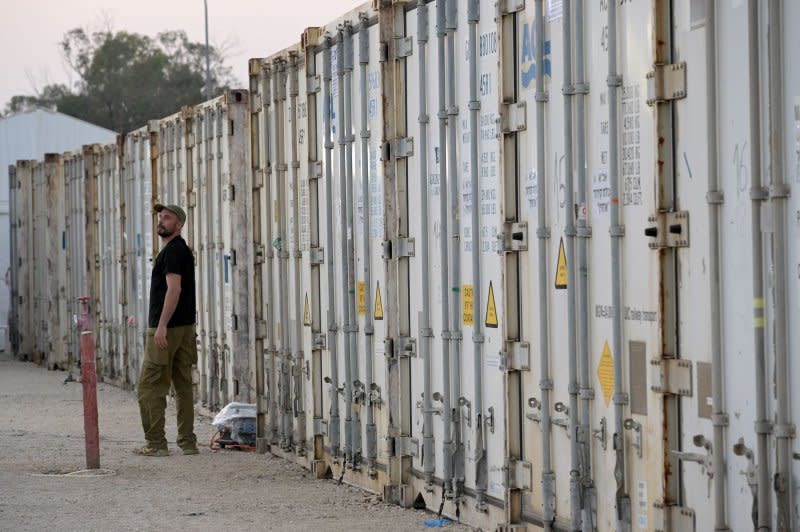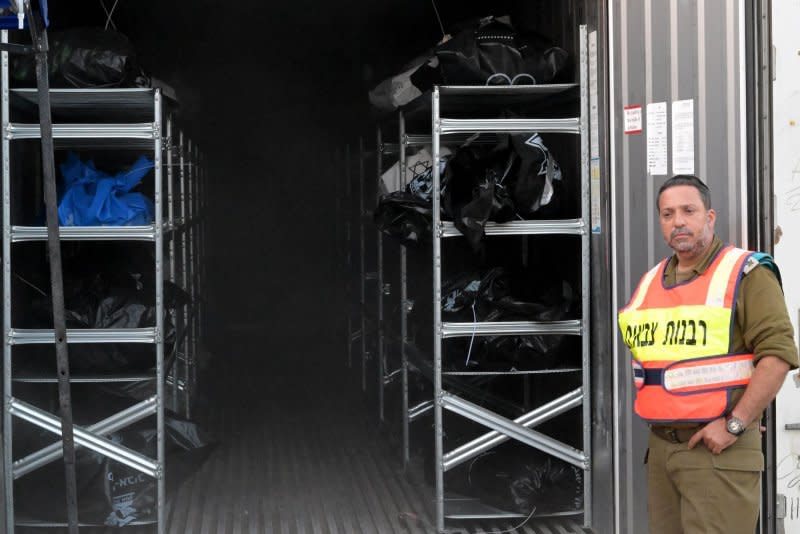Engulfed in war, Israel turns to technology to identify burned, tortured bodies

Oct. 24 (UPI) -- The organization charged with identifying hundreds of unidentifiable burned and tortured bodies from the war in Israel is turning to advanced technology as the National Center of Forensic Medicine's director admits "not all bodies will be identified."
"I've been a forensic pathologist for over 30 years, so it's rare for anything to truly shock me," said Dr. Chen Kugel, the institute's director. "I witnessed it all, I scrutinized every detail, observing bodies subjected to horrifying abuse, from adults to children, in various states of decay. But nothing, nothing in my entire career, prepared me for the horrors we've seen since that fateful Black Saturday on October 7."
The National Center of Forensic Medicine, which has received about 200 unidentifiable bodies, is one of only a handful of organizations authorized to provide forensic medicine identifications in Israel. Journalists were allowed access to witness the atrocities at the center, where bodies, bones and ashes undergo CT scans upon arrival and images are forwarded to law enforcement.
"It's unimaginable. It's evil incarnate," Kugel said, adding that volunteers often become visibly distressed.
"We found a father, embracing his little boy from a charred lump, both victims of close-range gunshots. The perpetrators didn't stop there; they burned the bodies and even wrapped iron wire around them. To call it 'cruelty' would be an understatement. It's a heinous crime against humanity, a chilling testament to the depths of human darkness."

"I must emphasize that not all the bodies found will be identified," Kugel added. "Some of them, including children, might not be identified in the near future. The longer it takes to find them, the more challenging it becomes to identify them, as all that remains are ashes and soot."
On Sunday, the Israeli army said besides the 1,400 killed and more than 212 people believed to be held hostage by Hamas in Gaza, there were about 100 people still unaccounted for. At least 5,000 Palestinians have been killed in retaliatory actions, according to Gazan health officials, since Oct. 7.

Israel's dead are also being taken to Shura army base for identification and preparation for burial.
"These are things we have not seen since the Nazis," said Col. Rabbi Ham Weisberg, head of the army's rabbinic division. "We are seeing trucks arriving with whole families inside -- grandparents, mothers, fathers and children -- and we are still collecting bodies from the roads, homes, playgrounds and fields where they were killed."

Weisberg estimated they have identified more than 800 bodies with another 400 still to be examined.
"Young girls, elderly women, raped ... Soldiers and citizens whose heads were chopped off," Weisberg said as he got choked up, adding that they have to use three methods to identify people.
The first is a loved one's visual identification. The second is dental records. And the third is DNA identification, which Weisberg said has been used in most cases because the bodies are so badly mutilated.
"Next to the identification place there is a family room to say goodbye to their loved ones, to say their last goodbye," said Maayan, a reservist dentist at the base.
"And we hear the cry and we hear the screams, and we still identify tirelessly, uncompromisingly, to give the fallen their last respect that nobody gave them," she added.
In addition to identifying the bodies, the reservists abide by the rules of Judaism when it comes to how a body is supposed to be treated before burial.
"There's a concept of respect for the dead," said army reservist Avigayil. "It's treating every dead person with dignity and respect that we'd want, the same as we'd want when we're living."

